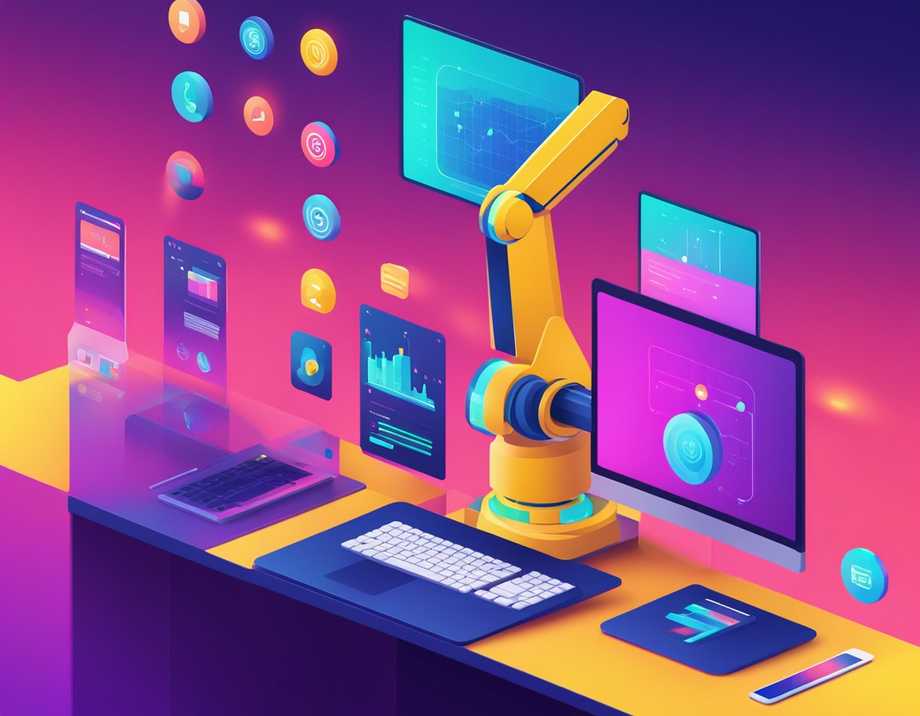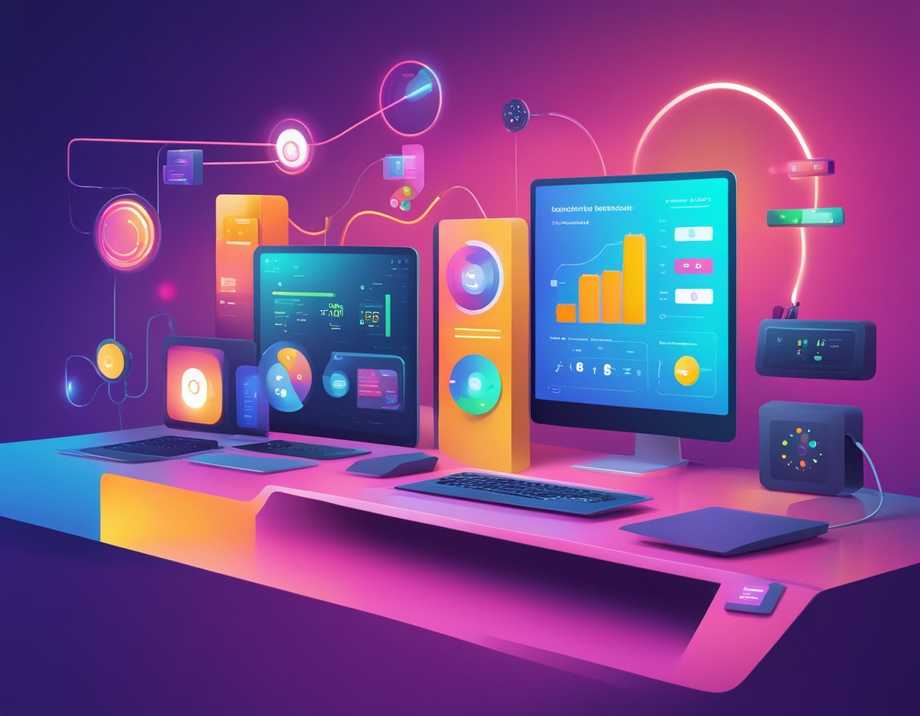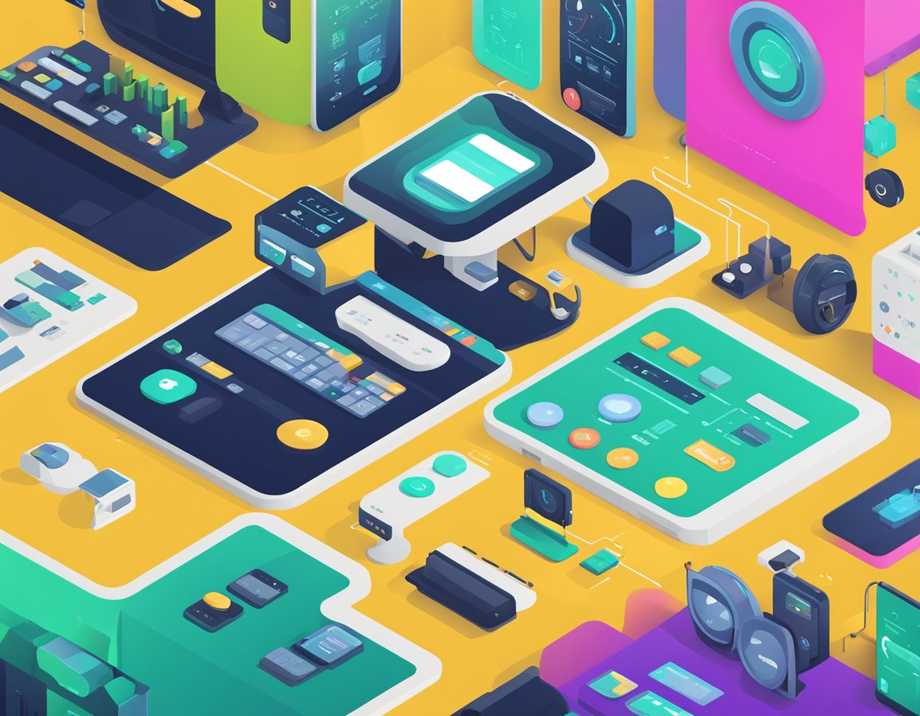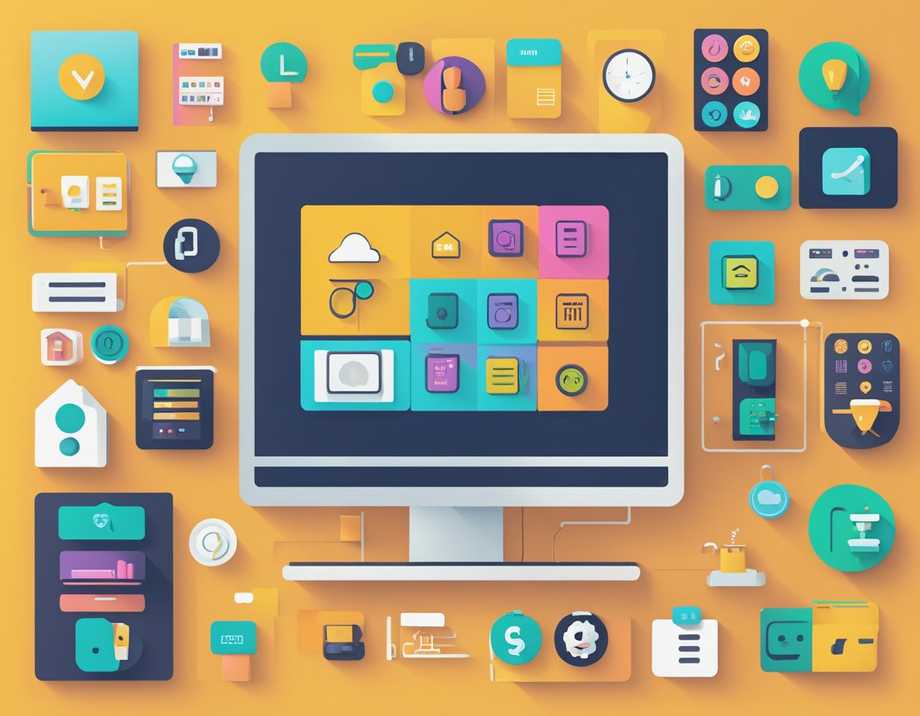Human-Machine Interfaces: Enhancing Interaction with Technological Systems
elettronica-industriale
Human-machine interfaces (HMIs) represent the communication bridges between human operators and machines. As technology advances, these interfaces evolve, facilitating more efficient and intuitive interactions with various systems and devices.
The development of these interfaces encompasses a wide range of disciplines, including computer science, cognitive psychology, and industrial design, each contributing to the refinement of how humans control and manoeuvre complex machinery and systems.
The effectiveness of a human-machine interface is measured by how seamlessly it enables users to perform their desired tasks. Good HMIs are characterised by their ease of use, responsiveness, and the degree to which they reduce the likelihood of operator error.
Across industries such as manufacturing, aviation, and healthcare, the adaptation of advanced interfaces, including touchscreens, gesture controls, and voice recognition, have revolutionised operational workflows, improving safety and productivity.
As the integration of artificial intelligence and machine learning into these interfaces progresses, they are becoming increasingly sophisticated. Predictive text input, adaptability to user preferences, and automation of routine tasks are just a few of the enhancements that contribute to the modern human-machine interface's capability.
This continual transformation opens up new horizons for how humans interact with technology, continually pushing the boundaries of what machines can accomplish under human guidance.
Overview of Human-Machine Interfaces
Human-machine interfaces (HMIs) are essential in facilitating interaction between people and technology, driving efficiency and effectiveness across various applications. These interfaces range from simple buttons and levers to complex graphical user interfaces (GUIs), each designed to minimise cognitive workload and maximise usability.
Defining Human-Machine Interfaces
Human-machine interfaces (HMIs), also known as man-machine interfaces, create a bridge between the user and the machine, allowing for control and data exchange. The design and implementation of HMIs consider several factors to ensure optimal performance and user experience.
Usability: Central to HMI design, usability refers to the ease with which a user can learn to operate the interface, effectively achieve their goals, and be satisfied with their interaction.
Complexity: The complexity of an HMI should align with the task at hand, providing precise control without overwhelming users. A well-designed interface manages complexity without adding unnecessary cognitive workload.
Graphical User Interfaces (GUIs): GUIs are a prevalent type of HMI, employing graphical icons and visual indicators to present information. They are designed to be intuitive, often making use of touchscreens for direct manipulation of on-screen objects.
GUI Features:
- Icons and buttons
- Menus and toolbars
- Dialogue boxes and windows
Performance: The effectiveness of an HMI is measured by how well it supports users in performing their tasks. This includes rapid response times, high accuracy, and predictability of the system's behaviour in response to user actions.
Cognitive Workload: A key goal for human-machine interfaces is to minimise the cognitive effort required to operate them. Interfaces should be designed to be understandable and not cognitively taxing, allowing users to focus on their primary tasks.
Technological Components and Hardware
The core elements for facilitating efficient human-machine interaction encompass advanced display technologies and robust interaction hardware. They are often supported by intricate systems such as industrial controllers and various sensors.
Display and Visualisation Technologies
Touch Screens: These devices serve as both input and output apparatus, providing an intuitive user interface for direct manipulation of on-screen objects. Remote Monitoring displays allow for the observation of systems at a distance, which is especially beneficial in industrial settings.
- Display: Full-colour, high-resolution LCD or OLED panels are standard, improving clarity for users.
- HMIs (Human-Machine Interfaces): Typically consists of graphical user interfaces (GUIs) that include visual elements such as alarms and indicators to alert the operator to the machine's status.
Interaction Hardware
Buttons and Switches: These are tactile components for controlling machine functions and are designed for quick and straightforward interaction.
- Hardware: Rigorous design focuses on durability and ergonomic efficiency, ensuring that switches and buttons can withstand frequent use.
Keyboards and Mice: Often used for more complex interactions, they provide precise control over the machine's functions.
Industrial Controllers and Sensors
PLCs (Programmable Logic Controllers): Central to industrial automation, they execute pre-programmed commands based on sensor inputs to control machinery.
- Sensors: Various types are employed to detect environmental conditions, positions, and other parameters, relaying crucial data back to the PLCs.
- Alarms: These are designed to notify operators of critical situations requiring immediate attention, often integrated with the PLCs for rapid response.
System Design and Integration
Effective human-machine interface design hinges on the seamless integration of the system’s components within an overarching framework. It ensures optimal usability and functionality.
This section delves into the essential elements of interface design principles and the ongoing considerations for system requirements and scalability.
Interface Design Principles
A successful interface should balance aesthetics with functionality. Consistency in layout and controls enables users to learn the system efficiently. An emphasis on clarity reduces the risk of errors, improving overall usability.
The interface must allow for:
- Accurate feedback on user actions
- Clear visual hierarchies for task prioritisation
- Accessibility features for diverse user groups
Interaction design principles dictate that the interface should be intuitive, facilitating a quick learning curve and allowing users to focus on their tasks rather than the tools they are using.
System Requirements and Scalability
The backbone of any human-machine interface lies in its capacity to meet initial system requirements and to grow over time (scalability). The design must address the following:
- Hardware compatibility: Ensuring that the system functions across various platforms and industrial control systems.
- Operating systems: Selecting the right OS for stability and support.
- Interoperability: Allowing diverse systems and applications to work together without any impediments.
- Security: Implementing robust security measures to protect against unauthorised access or manipulation of the system.
- Maintenance and Support: Planning for regular updates and technical support to ensure the system’s longevity.
- Cost: Providing cost-effective solutions while not compromising on quality and performance.
A system that scales effectively will handle increased loads and can adapt to evolving business needs or technological advancements. It is imperative to anticipate future requirements and design a system that can be upgraded or expanded with minimal disruption to the existing operations.
Application Domains
Human-machine interfaces (HMIs) are pivotal in augmenting efficiency and precision across numerous sectors. They are instrumental in the evolution of industry practices, enabling more intuitive interactions between users and machinery.
Industrial and Manufacturing
The implementation of HMIs within the industrial and manufacturing sectors has been transformational, propelling the momentum of Industry 4.0.
Engineers utilise advanced HMIs to oversee and manipulate industrial processes, enhancing automation and improving production rates.
For instance, in manufacturing, touchscreen panels and control systems allow for real-time monitoring and adjustments, culminating in heightened productivity and safer work environments.
Industrial Process Control:
- Automation Systems: Simplifying complex operations
- Safety Measures: Minimising human error
Energy and Resource Management
In energy and resource management, particularly within oil and gas, HMIs serve as the nerve centre for controlling intricate operations.
They provide the means for technicians to interact seamlessly with sophisticated systems, facilitating the management of energy production and distribution.
This has led to more sustainable practices, such as recycling processes, being easier to manage and optimise through precise data and control interfaces.
Oil and Gas Sector:
- Monitoring Equipment: Track performance metrics
- Operational Efficiency: Streamline procedures for energy yield
Consumer Electronics and Automotive
The realm of consumer electronics and the automotive industry has seen a significant integration of HMIs.
From the touchscreens in smartphones to the interactive dashboards in cars, these interfaces have become a staple of modern design and usability.
In vehicles, they contribute to safer and more enjoyable driving experiences, as drivers have access to necessary information and control without distraction.
Systems Operations and Data Management
Effective systems operations and data management are crucial for the integrity and efficiency of human-machine interfaces. They ensure that operators can monitor processes seamlessly and that performance data is acquired and analysed accurately, minimising the potential for human error.
Process Control and Monitoring
Human-machine interfaces in process control utilise Supervisory Control and Data Acquisition (SCADA) systems and Distributed Control Systems (DCS) to provide a high level of automation and remote access.
Operators leverage these systems to manage power distribution and process flows, depicted by P&ID images.
The integration of Internet of Things (IoT) expands the capabilities of these systems, enhancing overall performance.
SCADA systems, in particular, are known for their ability to connect with Remote Terminal Units (RTUs) and communicate using protocols such as Modbus and MQTT.
The use of Graphs and Charts allows for real-time visualisation of process data, aiding in decision-making and immediate response to system changes.
Data Acquisition and Analysis
Data acquisition involves capturing and logging critical data from various sensors and input devices.
The gathered data is managed and stored in sophisticated databases, permitting intricate analysis and historical data review.
Data logging is an essential component, as it ensures that all relevant information is recorded for compliance and operational optimisation.
Through Enterprise Resource Planning (ERP) systems, data from all aspects of operation are integrated, providing a comprehensive view of organisational performance.
The utilisation of advanced analytics allows for predictive maintenance and minimises downtime.
Additionally, remote access via secure networks allows for off-site management and real-time data analysis, enhancing the flexibility and responsiveness of operations.
Emerging Trends and Future Outlook
In the realm of human-machine interfaces, significant advancements are anticipated, particularly in the realms of smart technologies and sophisticated user interfaces that promise enhanced interactions and heightened efficiencies across various domains.
In the next paragraph, we'll take a closer look at some innovations.
Smart Technologies and IoT
The Internet of Things (IoT) continues to revolutionise how people interact with electronic devices.
In recent times we assisted at the integration of IoT into smartphones, tablets, and other electronic devices to streamline data acquisition and control processes.
This integration is pivotal in minimising cognitive workload and reducing industrial accidents.
Devices interconnected through the Internet of Things provide robust access control systems, ensuring secure and efficient automation processes.
Integration Examples:
- Smartphones with built-in sensors for environmental monitoring.
- Tablets used for remote control of home automation systems.
Impact of IoT:
- Reduction in cognitive workload by using automated alerts and notifications.
- Decrease in industrial accidents via predictive maintenance alerts.
Would you like to receive special insights on industrial electronics?





